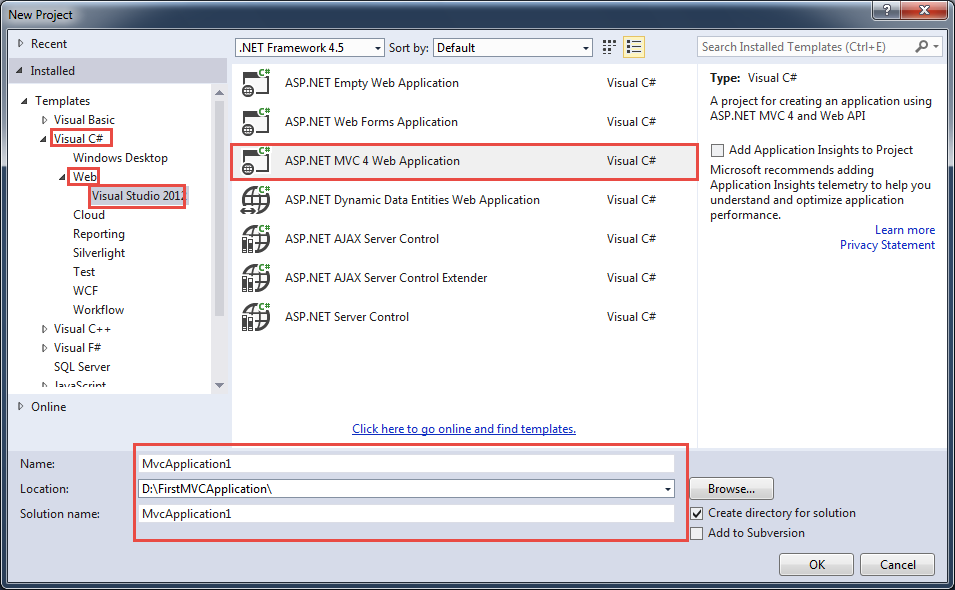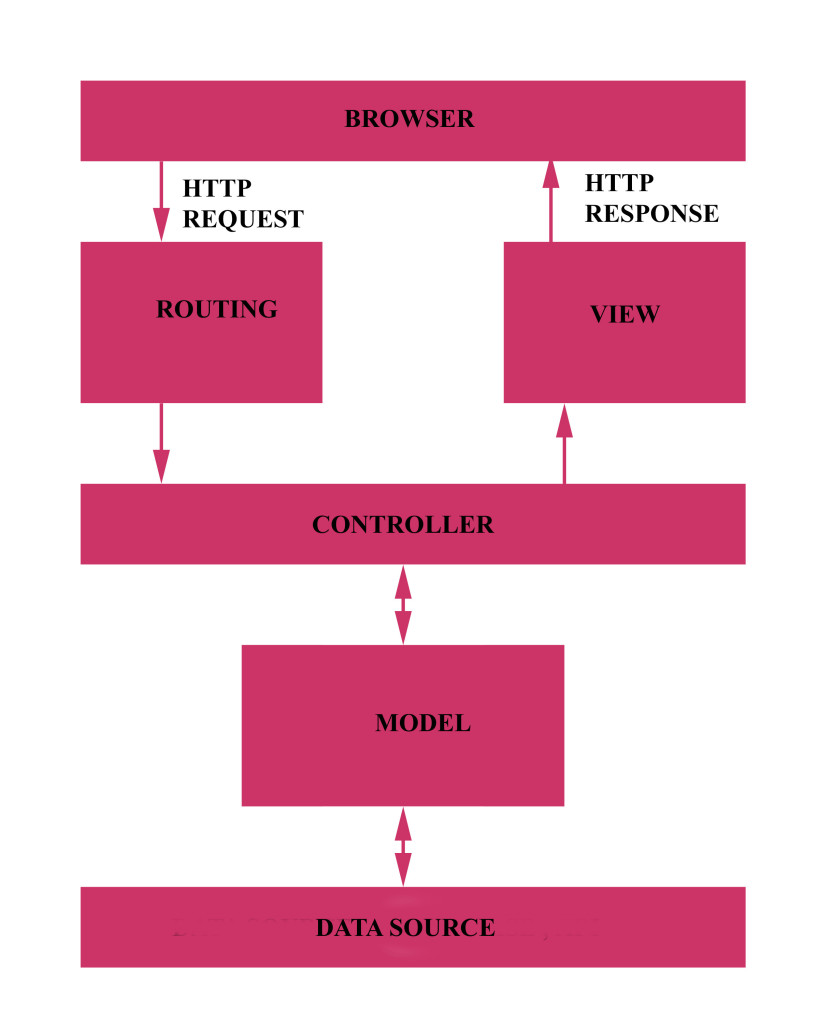Posts Tagged ‘ASP.net’
ASP .NET MVC Life Cycle
Hello Everyone,
In this blog we will discuss life cycle for ASP.NET MVC. Before starting with MVC, it’s a very important to know that how does your request process.
In above figure I tried to show how MVC application process. Your browser sends and receive request in form of HTTP Request and HTTP Response respectively. Routing is a process in which it analyzes the request and invokes an Action of the appropriate Controller. Action calls appropriate method of the model.The Model communicates with the data source (e.g. database or API). Once the Model completes its operation it returns data to the Controller which then loads the appropriate View. The View executes presentation logic using the supplied data. In the end, an HTTP response is returned to the browser.This is just a quick view of MVC life-cycle.
Let’s see details view of MVC life cycle.
This is performed by following steps.
- Receive first request for the application: An MVC application contains only one Route Table. The Route Table maps particular URLs to particular controllers. Check below code of Global.asax: Routes objects are add to RouteTable object when application starts first.The Application_Start() method is invokes only once when the very first page is requested.
public class MvcApplication : System.Web.HttpApplication
{
public static void RegisterGlobalFilters(GlobalFilterCollection filters)
{
filters.Add(new HandleErrorAttribute());
}
public static void RegisterRoutes(RouteCollection routes)
{
routes.IgnoreRoute(“{resource}.axd/{*pathInfo}”);
routes.MapRoute(
“Default”, // Route name
“{controller}/{action}/{id}”, // URL with parameters
new { controller = “Home”, action = “Index”, id = UrlParameter.Optional } // Parameter defaults
);
}
protected void Application_Start()
{
AreaRegistration.RegisterAllAreas();
RegisterGlobalFilters(GlobalFilters.Filters);
RegisterRoutes(RouteTable.Routes);
}
}
- Perform routing : When we make a request in MVC, UrlRoutingModule reads these request to create a RequestContext object.When requested URL found in RouteTable, the Routing engine forwards the request to the corresponding IRouteHandler for that request. The default one calls the MvcHandler. The routing engine returns a 404 HTTP status code against that request if the URL patterns is not found in the Route Table.
- Create MVC request handler: MVC handler implements IHttpHandler interface and further process the request by using ProcessRequest method.When ProcessRequest() is called on the MvcHandler object created, a new controller is created, as show in below code.
- Create and Execute controller: The controller is created from a ControllerFactory. This is an extensibility point since you can create your own ControllerFactory. The default ControllerFactory is named, appropriately enough, DefaultControllerFactory.The RequestContext and the name of the controller are passed to the ControllerFactory. CreateController() method to get a particular controller. Next, a ControllerContext object is constructed from the RequestContext and the controller. Finally, the Execute() method is called on the controller class. The ControllerContext is passed to the Execute() method when the Execute() method is called. For reference check below code.
virtual void ProcessRequest(HttpContextBase httpContext)
{
SecurityUtil.ProcessInApplicationTrust(delegate {
IController controller;
IControllerFactory factory;
this.ProcessRequestInit(httpContext, out controller, out factory);
try
{
controller.Execute(this.RequestContext);
}
finally
{
factory.ReleaseController(controller);
}
});
}
- Invoke action:The Execute() method finds a action of the controller to execute. Controller class can be created by us and Execute() method finds one of the methods that we write into the controller class and executes it.
- Execute result: Action method of controller receives the user input data, process these data and returns result. The built-in result types can be ViewResult, RedirectToRouteResult, RedirectResult, ContentResult, JsonResult, FileResult, and EmptyResult.
For more details Visit HERE
I hope this will help you.Your valuable feedback and comments are important for me.
Getting Started with MVC ASP.net
Hello everyone,
I would like to share a basic knowledge about MVC in ASP.net.
What is MVC.
The MVC (Model-View-Controller) is an architectural pattern for managing business logic and implementing user interface separately. It divides application into three components.
Model: It represents data into database.e.g. Database table. It helps us implement your business logic and validations for your application. Model is associated with view and controller.
View: It represent user interface of your application. User interface is created based on model.View is used for displaying information.It also have various control like text-box , label, drop-down etc..
Controller: Controller is a important bridge between View and model. It is heart of MVC. Controller can access and use the model object data and pass data to views by using ViewData.

Why we need MVC?
- MVC separates your application in three separate component. It helps development team to split application, so that each developer can do work separately, without any dependency.
- It provides flexible and systematic way to handle your application.
- It reduces time for development. As we know power is directly proportional to time.When time increase for project it need more power. It saves company’s power and money as well as developer can get more free time.
For More Details Visit Link:
https://msdn.microsoft.com/en-us/library/dd381412%28v=vs.108%29.aspx
Create Sample Project in MVC ASP .NET.
It’s very simple to create MVC application in just few step.
- Open Visual studio 2013 , click on file , Click new project.

- Expand Visual C# node , click on Web and click on ASP.WEB Application , provide name and application path and then press ok.

- Click on basic, check view engine then click on ok.

- Here your MVCapplication in created
For more details http://www.asp.net/mvc/overview/getting-started/introduction/getting-started
Also check : https://www.youtube.com/watch?v=Lp7nSImO5vk
I hope this will help you.


